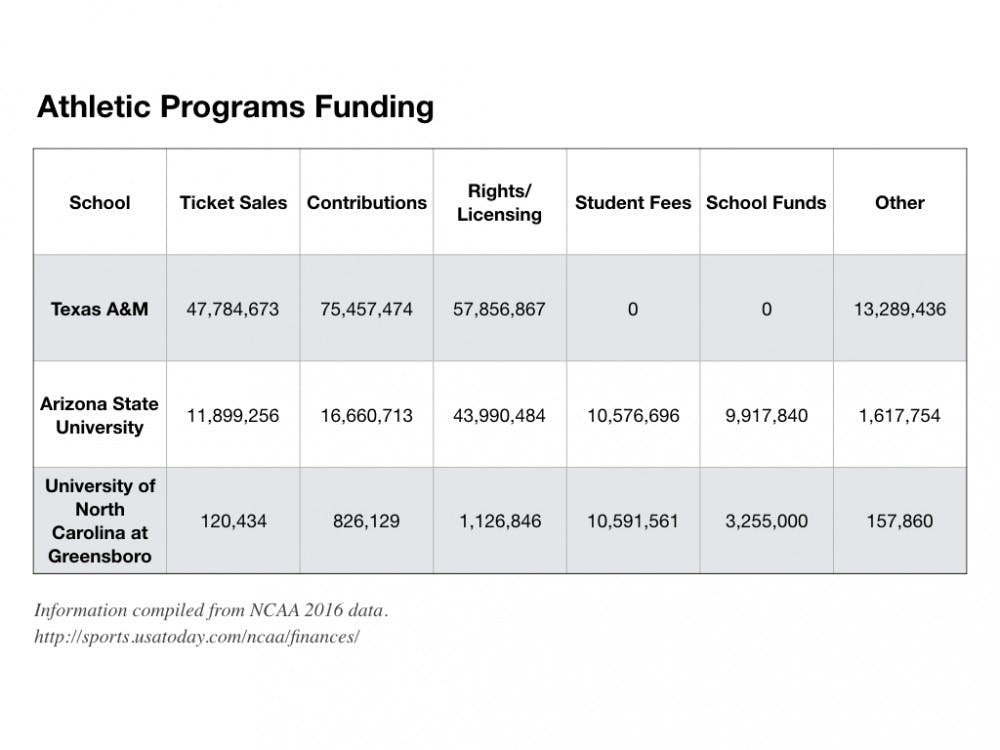This letter to the editor was submitted by Douglas Lawton, a PhD student at the ASU School of Life Sciences.
This letter is in response to Cameron Miller’s letter about the status of college athletic programs.
I want to make it clear that not every university is turning a profit from its programs. Our favored Sun Devils are, according to the same database Miller references. However, if we look at my alma mater, the University of North Carolina at Greensboro, the athletic program is funded majorly by student interior fees as compared to exterior money by an over 6:1 interior to exterior ratio, where interior fees are student fees and school funds, and exterior fees include ticket sales, contributions and rights/licensing.
I demonstrate this in the table below with the 2016 annual revenue of three universities as an example. Granted, this is one snapshot in time and only three schools, but I think it is enough to demonstrate the variability of the profitability of college sports programs.
If there were a requirement to pay student athletes, universities like UNCG would have a challenge sourcing the extra funding. I don’t see a situation where a college receives a dramatic enough increase in exterior funding to provide a stipend for the athletes.
The only alternative besides a dramatic boost in exterior funding would be to increase the interior funding such as student fees. Therefore, with an increase in the internal funding via student fees there would be a similar increase in the burden of affording college for students, especially for first generation and students lower on the socioeconomic scale. I don’t think this will help the goal of every university, which is ultimately education.
On the other hand, college sports programs at places such as Texas A&M University function more like professional sports organizations and are apparently not funded by college funds or student fees. In this case, it makes sense to support the athletes monetarily as it would, theoretically, not increase the burden on students.
I think it would be very beneficial to view college athletic programs on a spectrum. On one end, we have colleges like Texas A&M that are clearly bringing a lot of money, and on the other, there are colleges like UNCG where most funding for sports programs come from the students. We cannot make the overarching assumption that all colleges and universities are drawing a profit anywhere near to the “billions” that Miller suggested.
This is all to say that the problems of collegiate sports programs are complex and there is not an overarching rule that can be applied to all. We love to have simple answers to problems; however, this is rarely the case, and most problems must be solved case by case.
We must find a way to correctly supplement the work an athlete does for a university without hurting their fellow students.
Editor’s note: The opinions presented in this letter to the editor are the author’s and do not imply any endorsement from The State Press or its editors.
Reach the author at ddlawton@asu.edu or follow @DouglasLawton on Twitter.
Want to join the conversation? Send an email to opiniondesk.statepress@gmail.com. Keep letters under 500 words and be sure to include your university affiliation. Anonymity will not be granted.
Like The State Press on Facebook and follow @statepress on Twitter.





